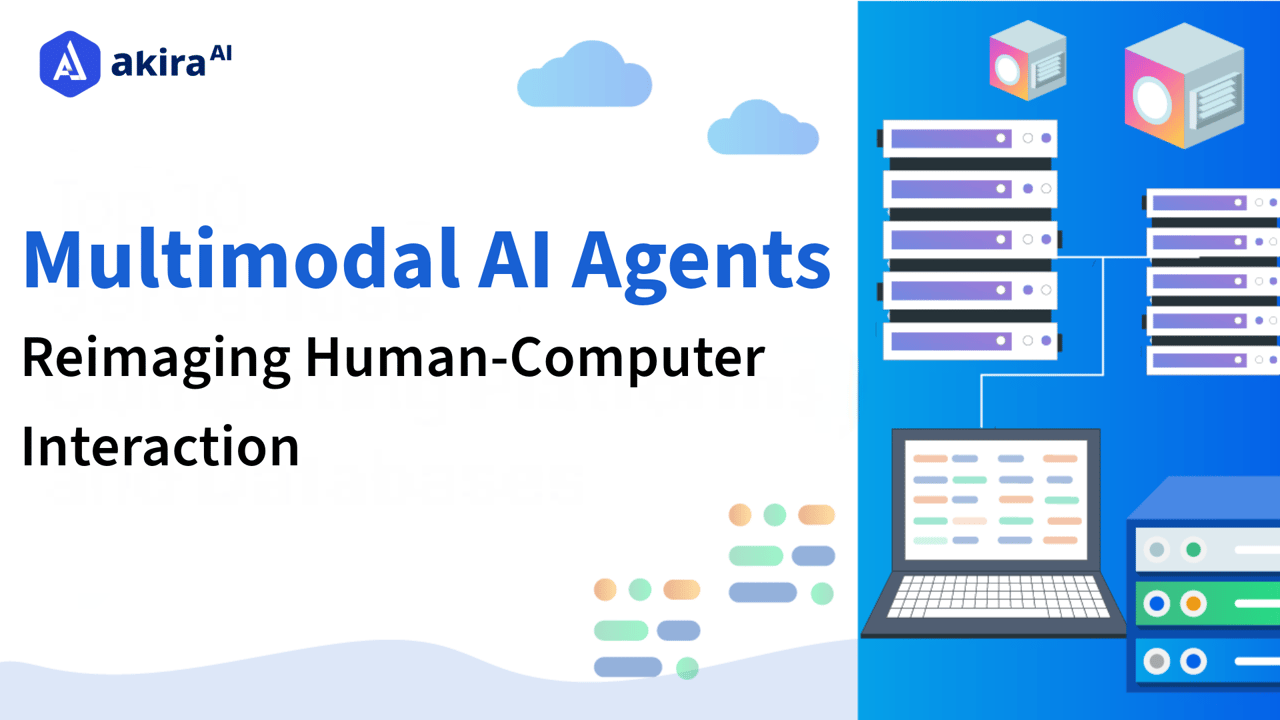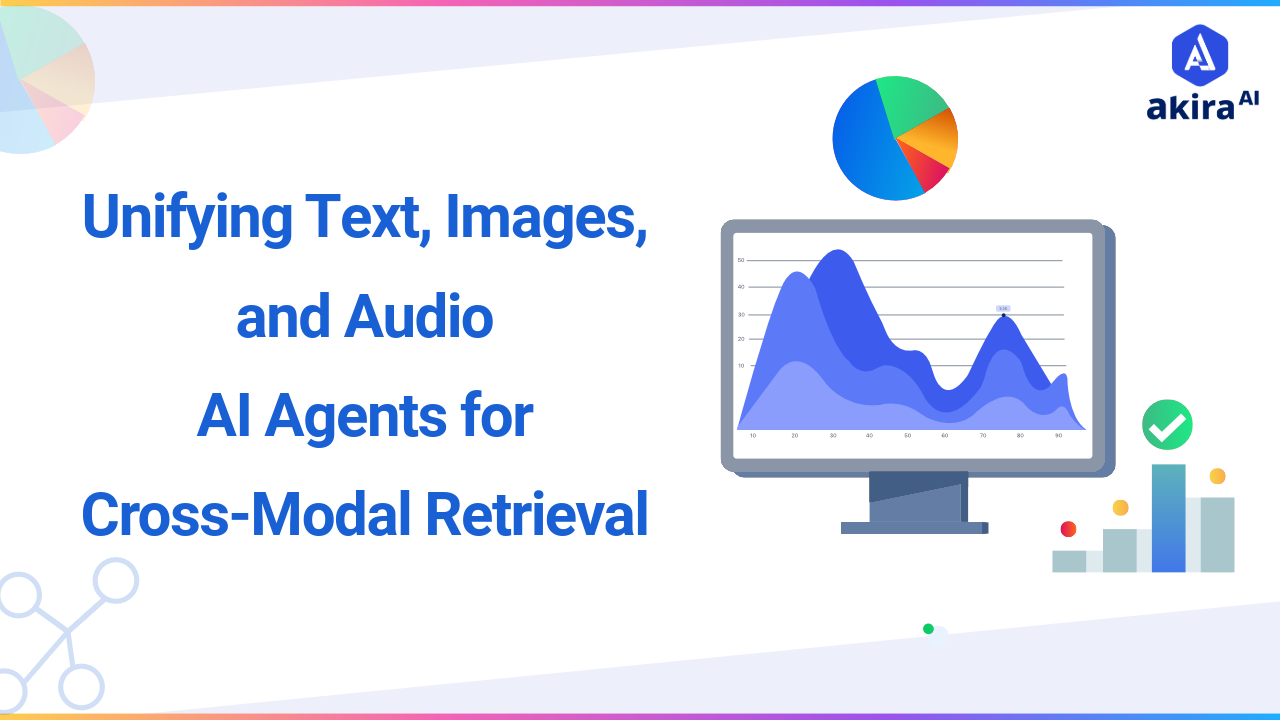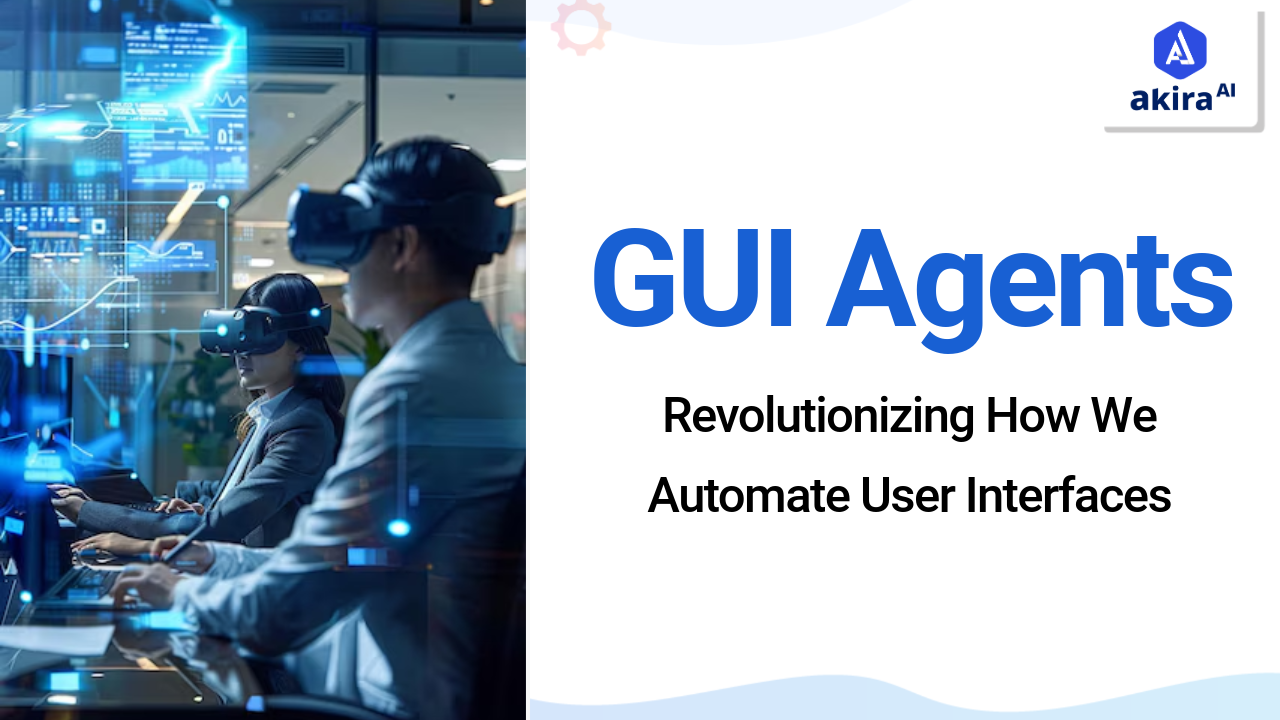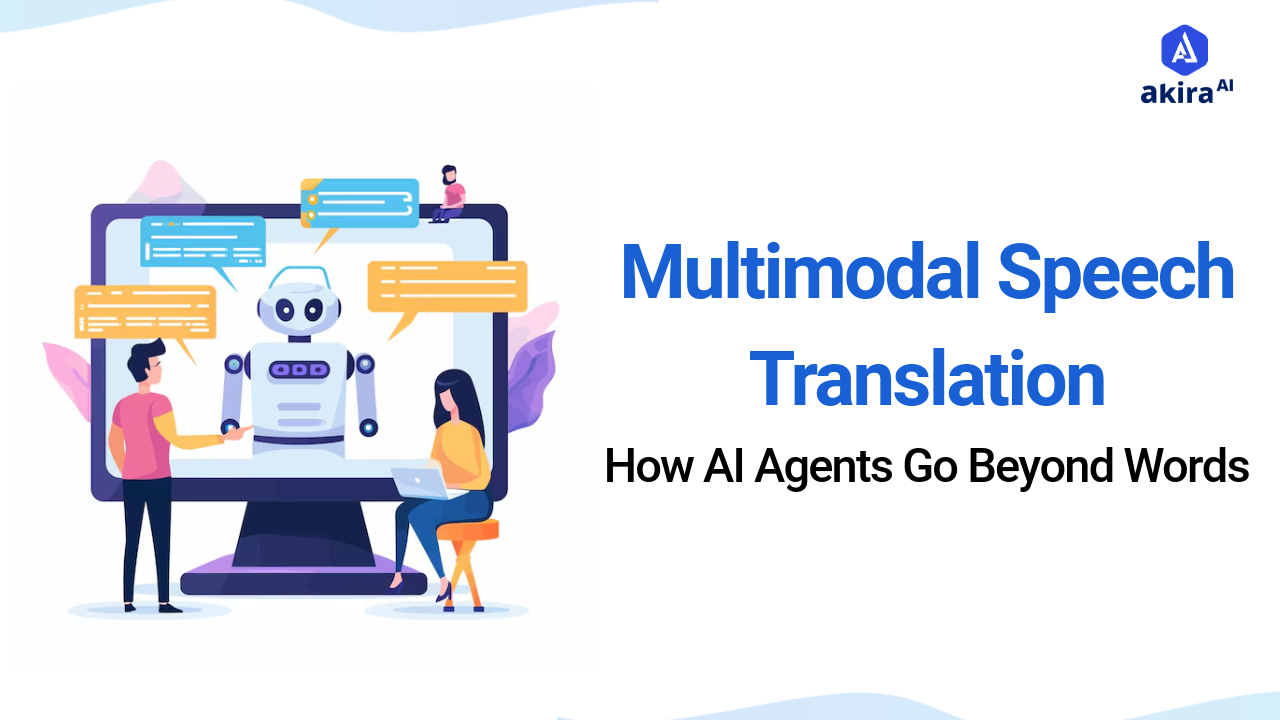Key Insights
Multimodal AI agents integrate text, audio, images, and video to offer a deeper, more accurate understanding of user interactions. These agents enhance the user experience by providing context-aware, personalized responses. They improve accuracy by cross-referencing multiple data sources and offer better context understanding for complex environments. The future of multimodal AI agents includes real-time feedback, more natural interactions, and an increased focus on ethical AI practices.

Today’s digital world calls for technology responding to complex, varied user needs. Agentic AI agents answer this call by integrating multiple data types—text, audio, images, and video—into a multimodal approach that comprehensively understands user inputs. Unlike traditional systems limited to one input type, these AI agents capture a richer context by analyzing not only words but also tones, visuals, and even environmental cues.
This capability makes interactions more intuitive and responsive. For instance, a multimodal AI agent could recognize a user’s tone alongside their message content, adapting responses accordingly for a more natural experience. Such agents are transforming areas like customer service and creative applications, enabling technology to engage with users in more personal, dynamic ways. Multimodal AI agents thus set a new standard in interaction, creating digital experiences that feel deeply attuned to individual needs
Background: Overview of Core Concepts
What are Multimodal Models?
Multimodal models are part of the advanced generation of artificial intelligence systems that focus on the ability of a given system to analyze various modes of input data. These state-of-the-art AI systems work with different modes, for example,text, images, and audio, and therefore their important achievement is a rich contextual sense, which is higher than the sense of simple traditional AI models that usually work with one mode. This approach enables multimodal interfaces to provide a deeper understanding of how their interactions take place thus providing a better interpretation and subsequently a better response to the users across different application domains.
Why are AI agents powered by large multimodal models Important?
AI agents powered by large multimodal models are crucial because they have the potential to transform how humans interact with machines. These models enhance the understanding of user intent—what a user aims to achieve with their input—enabling more accurate actions such as identifying words and images or comprehending speech. This multi-level capability is especially valuable in various call center activities and settings where context and the nuances of real-world interactions are essential.
The core idea behind multimodal representation is to deliver appropriate and useful responses by processing information across different modalities. By integrating multiple data types, these AI agents can provide a more holistic understanding of user queries, leading to more effective and relevant interactions. This not only improves user satisfaction but also enhances operational efficiency in sectors that rely on nuanced communication, ultimately setting a new standard for human-computer interaction.
Implementation: Multi-modal Models
How Multimodal AI Agents Work?
AI agents are constructed using multimodal models by integrating various computational intelligence technologies, including natural language processing (NLP), computer vision (CV), and automatic speech recognition (ASR). These systems are designed to process inputs by channeling them through dedicated models for each modality, facilitating the exchange of information to create a cohesive understanding of the user’s needs.
This integration allows for a richer interaction experience, as the availability of multiple data types fosters a more nuanced understanding of user intent. By combining insights from different modalities, AI agents can make more informed decisions and respond more effectively to user queries. This approach not only enhances the overall user experience but also empowers AI agents to perform complex tasks that require contextual awareness and adaptability.
Architecture of Multi-Modal Models

Fig1: Architecture Diagram of Multi-Modal Models
The architecture of multimodal AI agents is designed to facilitate the seamless integration and processing of diverse data types, enabling these agents to understand and respond to user needs more effectively. At its core, the architecture consists of several interconnected components that work collaboratively to interpret, analyze, and generate responses based on multiple modalities.
-
Input Layer: The architecture begins with an input layer that captures data from various sources, including text, audio, images, and video. This diverse range of inputs allows the agent to gather comprehensive context about the user’s request or environment.
-
Modality-Specific Processors: Each type of input is processed by dedicated modality-specific models. For instance, natural language processing (NLP) models handle text, computer vision (CV) models analyze images, and automatic speech recognition (ASR) models interpret spoken language. These specialized processors enable the agent to extract relevant features and insights from each modality.
-
Fusion Layer: After individual processing, the information from different modalities is sent to a fusion layer. This layer integrates the insights gained from the various processors, creating a unified representation of the user’s intent. The fusion layer employs advanced techniques, such as attention mechanisms, to weigh the significance of each modality based on the context of the interaction.
-
Reasoning and Decision-Making Engine: The integrated data is then passed to a reasoning and decision-making engine, which employs machine learning algorithms to interpret the combined information. This engine is responsible for making informed decisions based on the user’s input, enabling the agent to generate contextually relevant responses.
-
Output Layer: Finally, the output layer produces responses in various formats—text, voice, or visual feedback—depending on the user’s preferred mode of interaction. This flexibility allows the agent to engage users in a manner that feels natural and intuitive.
Integration with Akira AI
-
Multimodal AI Integration: Akira AI leverages a cutting-edge multimodal architecture, combining text, speech, image, and video inputs to create intelligent, responsive agents capable of understanding and acting on diverse user interactions.
-
Context-Aware Communication: By utilizing specialized processors for natural language processing (NLP), computer vision (CV), and speech recognition, Akira AI enables seamless, context-aware communication, allowing agents to address complex use cases with accuracy and efficiency.
-
Fusion Layer for Unified Responses: Akira AI's sophisticated fusion layer integrates insights from multiple modalities to generate unified responses, ensuring precise interpretation and tailored actions for diverse tasks such as customer service, data analysis, and predictive maintenance.
-
Adaptive and Scalable Solutions: The platform's combination of advanced reasoning, decision-making algorithms, and dynamic output capabilities empowers businesses to automate workflows, optimize operations, and enhance decision-making, with intelligent systems that evolve alongside business needs.
Key Benefits of Multi-Modal Models
-
Improved Accuracy: Multimodal AI agents enable cross-verification of data from various sources, reducing errors and enhancing decision-making (e.g., by comparing images with patient records during diagnoses). This ensures that critical choices are backed by reliable information, ultimately leading to better outcomes.
-
Enhanced User Experience: These agents allow designers to create more natural and engaging interactions across text, voice, and gestures, resulting in a more fluid and dynamic communication experience. This approach fosters a deeper connection between users and technology, making interactions feel more intuitive.
-
Better Context Understanding: By integrating outputs from multiple modalities, multimodal agents enhance contextual analysis, which is vital in applications like self-driving cars that rely on diverse data streams. This capability enables the agents to respond appropriately to complex real-world situations.
-
Increased Versatility: A single multimodal AI solution can tackle various tasks across different industries, reducing costs and improving operational efficiency. This adaptability allows businesses to streamline their processes and maximize resource utilization.
Case Studies
E-commerce: Users can send images coupled with text as requests, and customer service AI agents process them to respond to inquiries and provide relevant products. This capability enhances the shopping experience by allowing for more accurate and personalized recommendations.
Healthcare: Integrating patient data and imaging technologies enables healthcare workers to make better decisions since they have more comprehensive information to base their choices on. This leads to improved patient outcomes through more precise diagnostics and tailored treatment plans.
Education: These learning technologies incorporate various response forms, including voice, text, and visuals, providing a more personalized approach to teaching and learning. This diversity caters to different learning styles, fostering greater engagement and retention of information.
Automotive: For instance, biometrics and object recognition processes for Advanced Driver Assistance Systems (ADAS) rely on visual and sensor data to gain insights into road conditions and support drivers in minimizing risks. This technology enhances overall road safety and driving comfort.
Customer Service: AI chatbots utilize text, voice, and visual interfaces to address queries more effectively, providing instant support and increasing customer satisfaction. This responsiveness helps build trust and fosters a more positive brand image.
Challenges and Limitations
Despite their potential, multimodal models face several challenges:
-
Integration Challenges: Combining data from diverse sources involves complex integration processes, which can lead to compatibility issues. Developing standardized protocols for data sharing and ensuring seamless interaction between different systems is crucial but often difficult to achieve.
-
Resource Intensity: Training multimodal models often requires extensive computational power and memory. This resource intensity can lead to increased operational costs and may limit accessibility for smaller organizations or those with less technical infrastructure.
-
Interpreting Context: Understanding context across different modalities can be complex, as each type of data may convey different meanings in various situations. Developing algorithms that accurately interpret and respond to context requires ongoing research and refinement.
-
User Acceptance: Adopting multimodal AI technologies may face resistance from users who are accustomed to traditional interfaces. Educating users about the benefits and functionality of these systems is essential to drive acceptance and integration into everyday use.
-
Maintenance and Updates: Keeping multimodal AI systems up to date with evolving data sources and algorithms requires continuous maintenance. This can be resource-intensive and necessitates a dedicated team to ensure optimal performance and accuracy over time.
Future Trends of Multi-Modal Models
-
Enhanced Natural Interactions: As AI agents become more sophisticated, future developments will enable even more natural interactions that closely mimic human communication. This includes improvements in understanding context, emotion, and intent across various modalities.
-
Integration of Real-Time Feedback: Future multimodal AI agents will increasingly incorporate real-time feedback mechanisms, allowing them to adapt and improve their responses based on immediate user interactions, thus creating a more personalized experience.
-
Cross-Domain Applications: The versatility of multimodal agents will lead to their integration across diverse industries, from healthcare and education to entertainment and customer service, facilitating seamless transitions between different domains of application.
-
Increased Use of Augmented Reality (AR) and Virtual Reality (VR): The combination of multimodal AI with AR and VR technologies will create immersive experiences, enabling AI agents to interact with users in engaging and interactive environments, particularly in training and education.
-
Greater Focus on Ethical AI: As the deployment of multimodal AI expands, there will be a stronger emphasis on ethical considerations, including bias mitigation, data privacy, and transparency in AI decision-making processes, fostering public trust and acceptance.
Conclusion: AI Agents in Large Multi-Modal Models
AI agents powered by multimodal models represent a transformative leap in how we engage with technology, fundamentally reshaping our interactions with systems. By integrating diverse data forms—including text, images, and audio—these agents provide deeper insights and more nuanced responses, significantly enhancing their accuracy and relevance. However, this technology also brings challenges, such as technical complexity, data privacy concerns, and the potential for bias. Addressing these challenges requires a commitment to responsible development and an ethical approach to AI. By fostering trust among customers, technologists, and society, we can ensure that the benefits of multimodal AI are accessible to all stakeholders. As we continue to advance these intelligent agents, we can look forward to a future where human-computer interactions are richer and more engaging, ultimately enhancing both personal and professional relationships.


